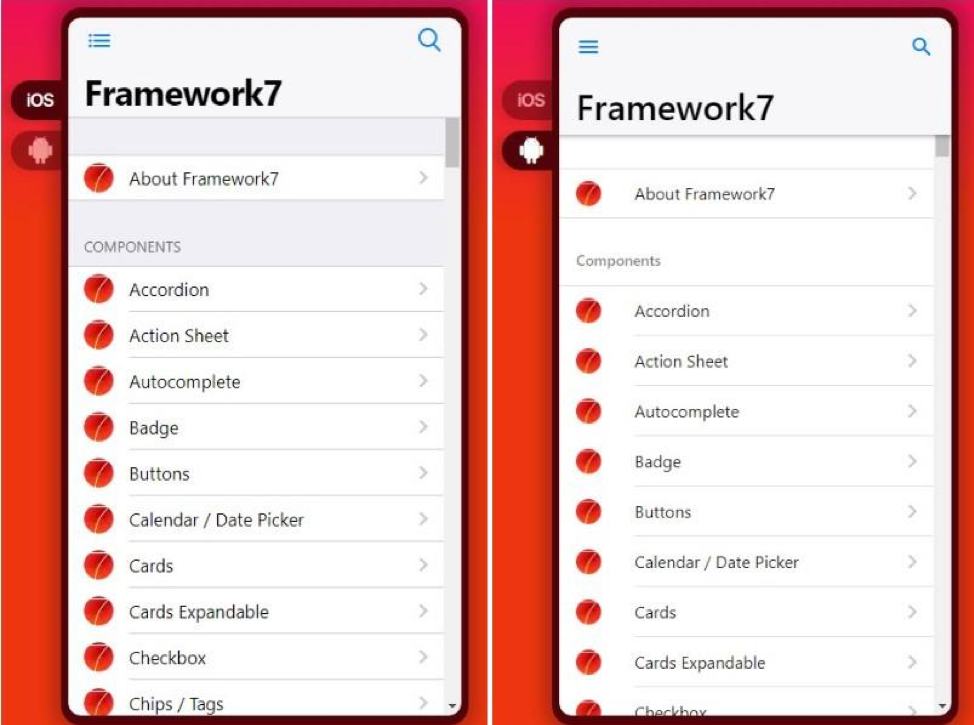

Updated December 16, 2024
Native and hybrid mobile applications provide businesses with a choice between a fast solution or longer-lasting performance.
Businesses often struggle with the beginning stages of mobile app development, such as knowing where to start, what options are available to them and their budget, and which option would best fit their needs.
Oftentimes, businesses find themselves choosing between native and hybrid apps.
Looking for a Mobile App Development agency?
Compare our list of top Mobile App Development companies near you
In this article, I will help you navigate the differences between native and hybrid apps while sharing tips on mobile app development.
Native mobile applications are a great solution for applications being made for a specific device platform, such as Android or iOS.
Native apps are made in the native programming language for the targeted platform.
For example, if you’re developing an app for iOS, you would program the app using Objective-C or Swift. For an Android app, you would use Java or Kotlin and for Windows, you would use C#.
According to Mobiloud, native apps are what you usually think about when you think about apps. They are usually distributed in apps stores and offer intuitive user interfaces.
For the user interface, UX/UI designers should follow design guidelines or Human Interface Guidelines to enable seamless integration with Android or Apple platforms.
Hybrid apps are developed using web technology, and as a result, provide a web application running as a stand-alone application.
While native apps are created using the target platform’s native programming language, hybrid apps are most commonly created with HTML5, CSS, and JavaScript.
Hybrid apps can look just like native mobile apps with a few significant differences.
In the photo below, you can see how hybrid builders are trying to imitate the look of the native mobile app. To do this, they rely on different frameworks.

A framework is a development environment where generic functionality can be changed by additional user-written code.
Hybrid app developers typically depend on three frameworks:
These frameworks almost look like a native app, but their backend solutions are not as smooth and efficient as a native mobile app’s would be.
Backend development involves creating code that produces a user interface. The main problem in hybrid apps’ backend solution is low performance due to the dependency on third-party platforms.
However, hybrid apps are faster and less expensive to develop than native apps.
Native apps tend to be faster than hybrid or web apps.
For example, in 2012, Mark Zuckerberg said that Facebook’s biggest mistake was betting on web apps and not going native.
He also said that one of the biggest advantages of a native iOS mobile app has been the ability to increase the app’s overall speed.
When scrolling through the app, users will notice how much faster native apps are than hybrid apps.
You only need a small team to develop a hybrid app – there’s no need to hire iOS or Android developers. This cuts down on overall cost.
Delivery time is also shorter because you have one developer and one version of the mobile app to develop. The program code is written only once with hybrid apps, and other versions for different platforms are developed compiling the original code.
Maintenance of the application is easy because a single code base allows easier and faster updates.
Updates and other fixes are only performed on a web server without user intervention compared to native applications where the user must manually update the application.
Native apps are designed for the operating system of the users’ device and are installed locally, making them faster and more intuitive. Native apps can directly connect to the device’s GPS, images, and camera.
Your mobile app must perform well and must offer a positive user experience if you want satisfied users.
If your mobile app is slow, unstable, or complicated, users will likely uninstall the app and not recommend it to others.
With a native mobile app and experienced UX/UI designer, your user experience will be unmatched.
Businesses with hybrid apps may want to consider converting it to a native app.
For example, when a newspaper in Bosnia and Herzegovina converted its app from hybrid to native, the number of total downloads and active users increased.

Two months after the native app was released, the newspaper saw a 7% increase in the number of downloads on Android devices and 11% increase on iOS devices.
Overall, there were 18,000 new downloads in less than two months, both on Android and iOS downloads.
This impressive boost in performance is due to elements of native apps’ unparalleled user experience, such as:
By converting your hybrid app to a native app, you can cater your app to the needs of your users which will motivate them to download, use, and share the app.
Devices today are advanced and expected to be fast, however, not all users will have the latest smartphone or have the newest version of the operating system installed. You want to make sure these scenarios won’t cause problems for those using your mobile app.
Native mobile apps are faster and more flexible than hybrid applications. Native apps can quickly access push notifications or microphone on devices. They use the “GPS” access and have a “Map” feature that requires access to specific hardware on the user’s device. Hybrid apps can’t do this.
If you choose a hybrid application, you may still have to write some native code or edit the app’s configuration using the native system.
This could also influence the total cost of hybrid development so, before moving forward with a hybrid app, you should check:
By considering the different functionalities you want your app to possess, you can be better prepared to choose between hybrid or native apps. While hybrid apps are the less expensive option up front, adding complex functionalities to your hybrid app will require some native programming, which will increase the cost.
Think about your budget and create a wish list of features your app should have.
Find a proven mobile app development agency and exchange your ideas with them. By doing your research and having a clear vision of your future mobile app, you can decide which type of app suits your business’s needs.


